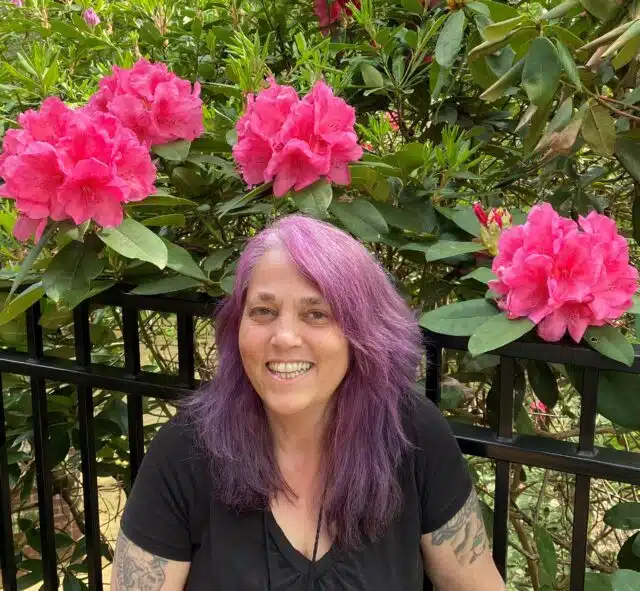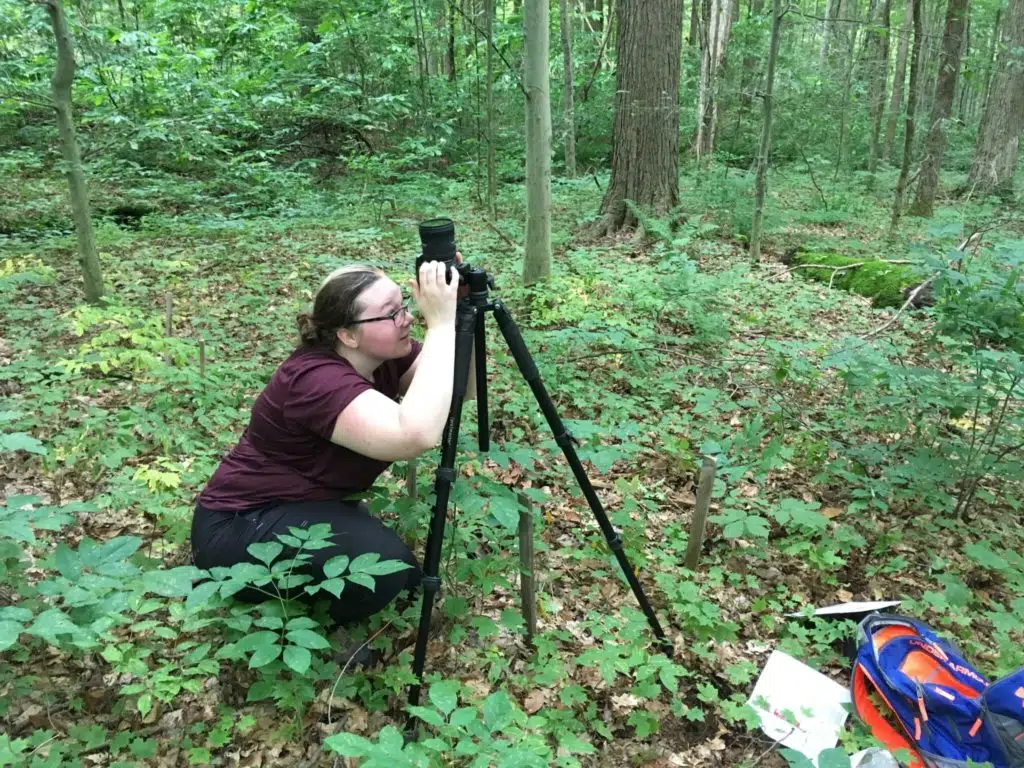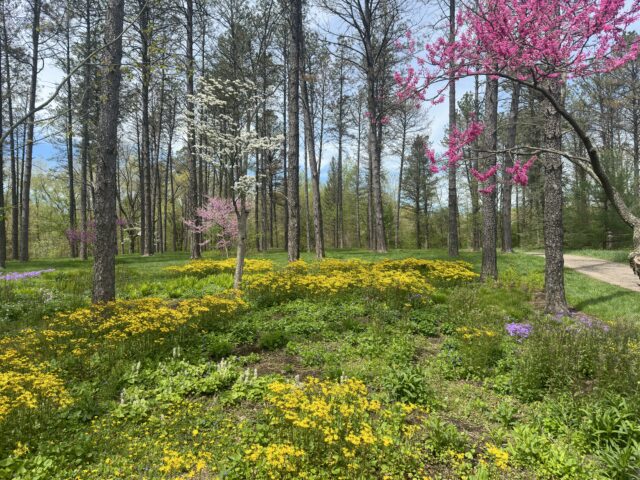Meeting the Grand Botanic Garden Challenge at Holden Forests & Gardens
January 15, 2021

When we consider the major challenges facing humanity today, it is exciting to think that plants can provide a myriad of sustainable solutions. Problems with water quality, our dependence on fossil fuels, food insecurity, and even emerging human diseases can all be addressed, if only we can find the right plant for the job. Plants have amazing capabilities to alter ecosystem function and soothe our ailments, and over evolutionary time they have adapted and acclimated to inhabit nearly every environment on earth, with their ability to capture energy from sunlight forming the basis of life as we know it.
Wow, plants, just wow!
But an urgent task is before us if we want to take advantage of all that plants have to offer in promoting the well-being of humankind. Currently, at least 20% of plant species on earth are threatened with extinction, and this doesn’t even include the plants yet-to-be discovered. Since the early 19th century, botanical garden science has been at the forefront in identifying the diversity of plants on earth and placing each species into the taxonomic framework of the great Tree of Life. But a recent article by Paul Smith, Secretary General of Botanic Gardens Conservation International (BGCI), entitled “The challenge for botanic garden science” sends out a call, in these extraordinary times, for botanical gardens to do more.
Smith notes that every plant that goes extinct represents a missed opportunity. Was that the right plant to make a medicine for a new disease? Was that the right plant to grow gobs of renewable biofuel? Was that the right plant to feed millions? Humankind needs to make a herculean effort to conserve plant biodiversity, right now. Here again, botanical gardens are major contributors to this effort, with approximately 1/3 of all known plant species currently conserved and managed in a botanical garden somewhere on Earth.
While that is certainly a commendable effort, including examples of plants that have been saved from extinction through the efforts of botanical gardens, Smith also notes that botanical gardens worldwide are increasingly shifting their focus away from serving as scientific institutions, and moving more toward visitor attraction as their primary objective. This shift in focus, says Smith, presents opportunities for the public to learn about the beauty of plants, but he also provides a stark warning, “unless botanic gardens shift their efforts toward the conservation, management and use of plants, the loss of plant diversity will stifle human innovation, adaptation, and resilience.”
A bold challenge, indeed! So, what is being done, here at Holden Forests & Gardens, to meet this Grand Challenge? Our research and conservation departments, along with horticulture and collections staff, have supported plant conservation efforts from the get-go, conducting important ex situ conservation efforts within our display gardens. One of the hallmarks of Holden Forests & Gardens is our extensive Rhododendron collection. Our Rhododendron Collections Manger, Connor Ryan, is actively seeking to increase the diversity of North American species in our collections, and also their genetic diversity. Recently, Connor and HF&G Field Station Specialist Jing Wang (pictured here) travelled to Millersburg, PA to collect seeds of Minniebush, an endangered Rhododendron species, at the Ned Smith Center for Nature and Art in (Photo by Jerry Hassinger). By conserving genetic diversity within this species, we are taking that extra step to preserve not just the right species, but also unique individual plants that may have better medicinal properties, or a more drought resistant flower.
This work on Rhododendron conservation is complemented by research in my own lab at HF&G investigating the physiological stress tolerance of Rhododendron species, with an eye towards understanding how climate shapes their distribution on earth. There is no place I would rather be than having fun with some of the high-tech equipment in our lab at Holden Arboretum, where we have the capability to investigate almost any plant trait or compound you can imagine. Our studies on Rhododendron have implications beyond purely academic questions too, as our work provides insight on new target traits for breeding programs, and for ecosystem scientists seeking to understand the ecological consequences of climate change and the role of plants in mitigating it. Rhododendron also represents a unique opportunity to introduce visitors to the importance of biodiversity conservation, because who can resist falling in love with the vast variety of bright, bold Rhododendron trusses?
Holden’s conservation efforts also include approximately 3,100 acres of natural areas, including Stebbins Gulch, one of the most stunning patches of old growth beech-maple forests that remains in Northeast Ohio. This makes Holden an absolute treasure for visitors, but also the perfect place for HF&G scientists Dr. David Burke and Dr. Sarah Kyker to carry out their work investigating the role of soil microbes in driving plant responses to anthropogenic disturbances like pollution and climate change. Here, you might find student intern Aly Milks (pictured here) taking photos to determine the tree canopy density or collecting soil samples.
This work centers on the fact that, realistically, it won’t work to conserve individual plant species, because plants need their pollinators, their microbial partners, they need a functioning ecosystem to survive. This work at Holden is pushing the boundaries of our academic knowledge on forest communities, but also helping us understand the immanent threats to the system, giving us a fighting chance to find a remedy.
Our organization is also actively pursuing research on management practices, with Dr. Katie Stuble leading research efforts in Working Woods. This living, breathing classroom serves as the experimental framework for the Holden Community Forestry and Research departments to work together in testing the effects of different types of tree harvesting practices on forest community composition and regeneration. High school intern Adele Metres (pictured here) is part of a small army of students who have helped characterize these impacts, gaining career experience while also making their own valuable contribution to this long-term study. This project takes a practical view of forest resources, grounded in the audacious hope that humans can sustainably manage resource extraction from natural environments, while still enjoying the sound of birds tweeting and the sight of spring wildflowers blooming in managed landscapes.
We don’t stop there, though, oh no! Our newest member of the HF&G research team, Dr. Na Wei, is investigating the genetics of wild crop relatives, laying fundamental groundwork understanding how plants evolve in response to the environment, but also revealing genetic diversity of wild plants to inform breeding and conservation efforts. She’s growing literally thousands of strawberry plants in our greenhouse to understand how plant-microbe interactions shape the traits and growth of different species, providing insight into plant adaptation, but also pointing a path forward to breed more stress resistant varieties of these important plants (I think we can all agree that strawberries are very important!).
I’m proud to say that we at HF&G can count ourselves as fully committed to the challenge raised by Smith and BGCI, and that includes the clear-eyed realization that our work is never done. Smith points out that there are over 60,000 plant scientists and specialized horticulturalists working at botanical gardens around the world, hosting over 300 million visitors each year, but the vast majority of those people are not engaged in research. Here at Holden, we’re working on that too, imbuing scientific findings and rigor into how we approach our display gardens, our glass houses, our events, and our educational offerings. When combined with an engaging visitor experience, we hope to inspire others, even you, to take up the challenge to conserve plant biodiversity as part of the solution for a brighter tomorrow.
Link to the article by Paul Smith, Secretary General of Botanic Gardens Conservation International: https://nph.onlinelibrary.wiley.com/doi/epdf/10.1002/ppp3.10

Juliana S. Medeiros, PhD
Plant Biologist
My research focuses on plant anatomical and physiological acclimation and adaptations to the abiotic environment. I am interested in how phenotypic and genetic variation in plant form and function interact with variation in climate over space and time to drive ecological patterns and the evolution of plant diversity. I focus primarily on plant hydraulic traits, including xylem water transport, leaf gas exchange and the integration of leaf and xylem function. Click here to learn more about research in my lab: Medeiros Lab Webpage














